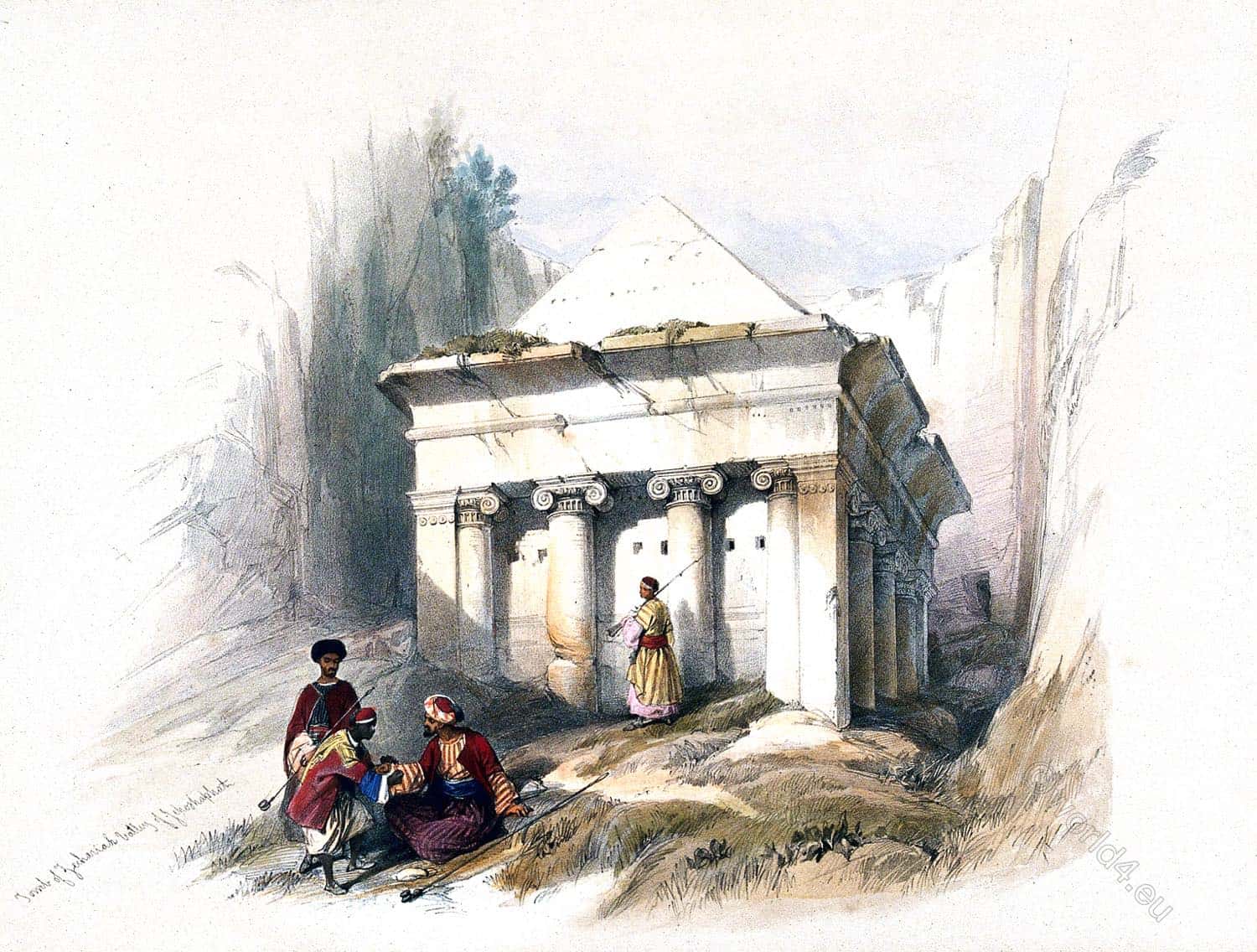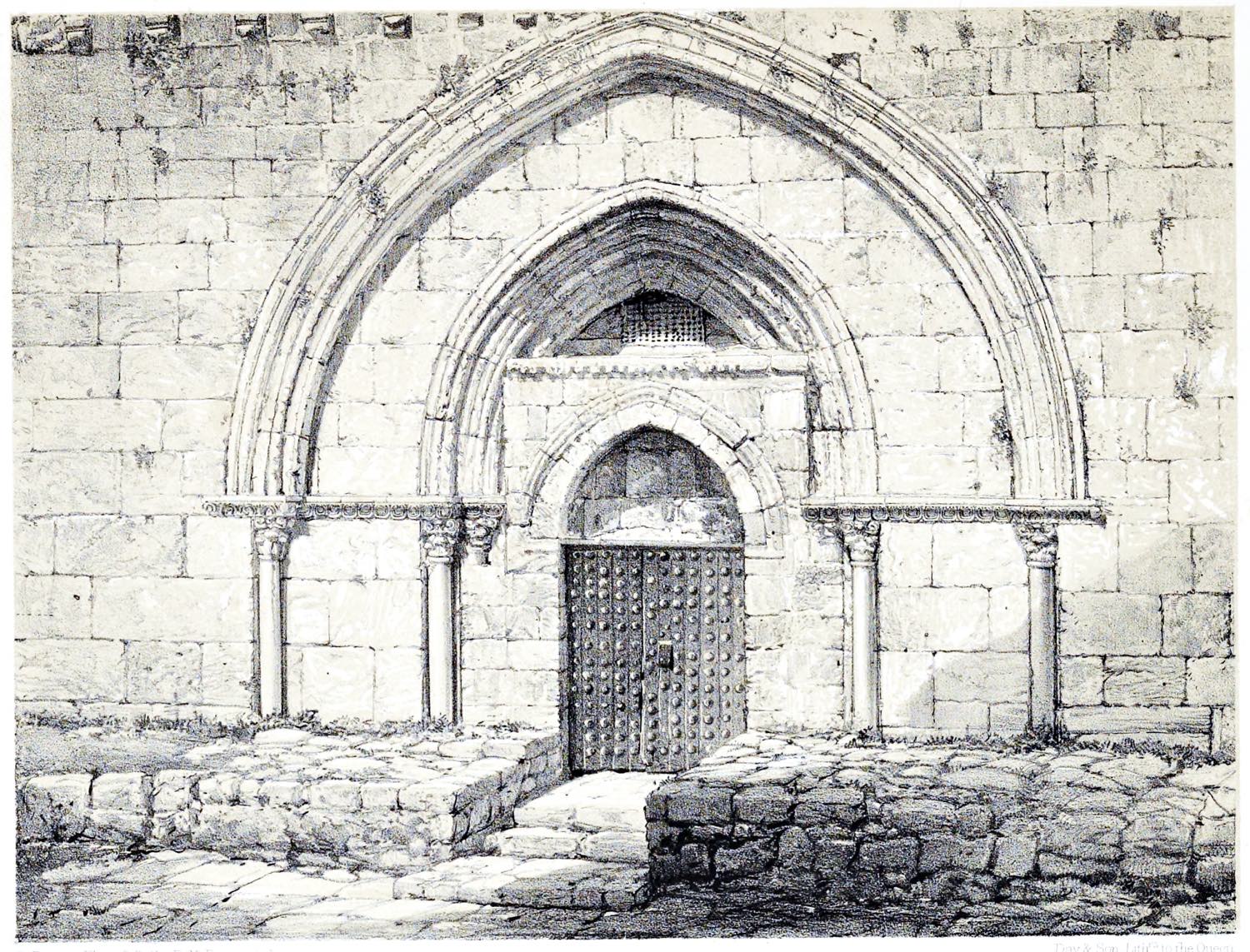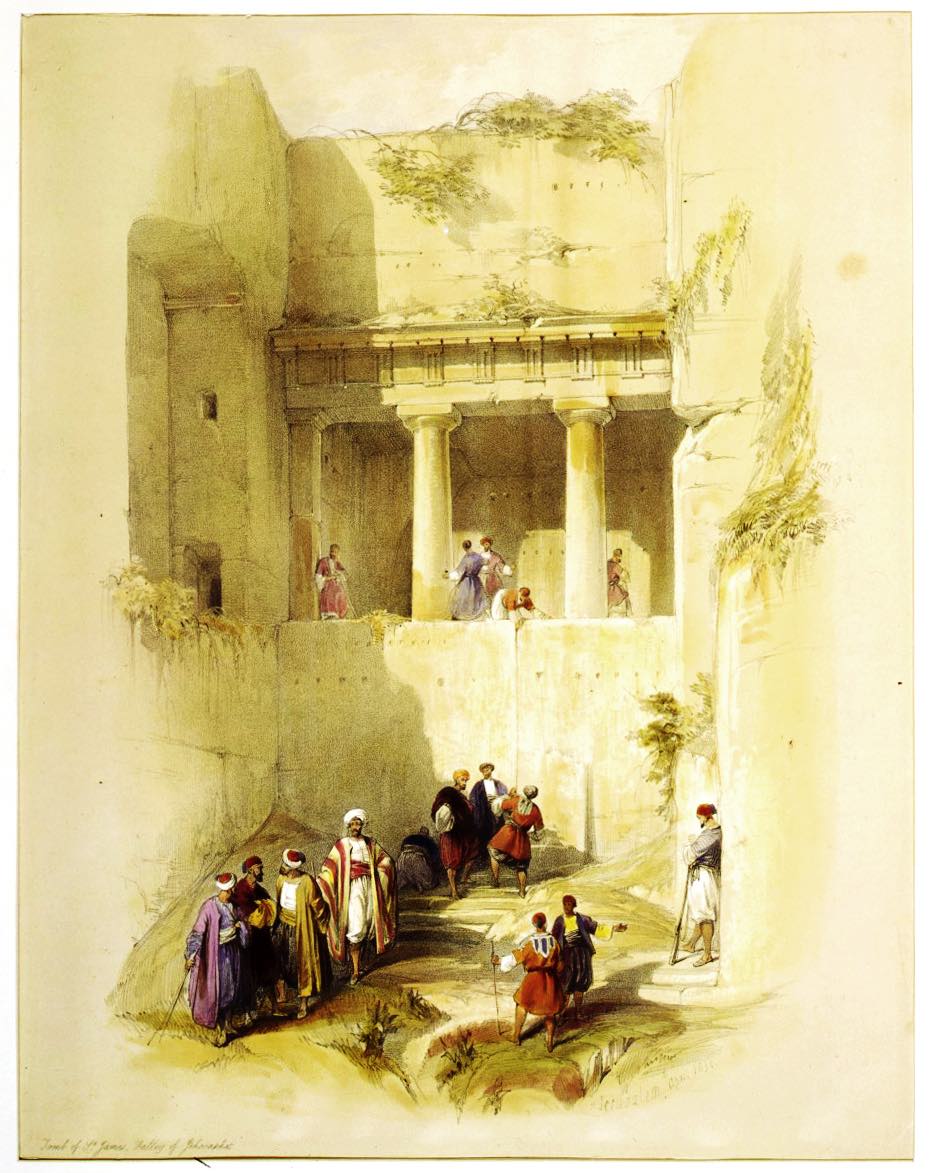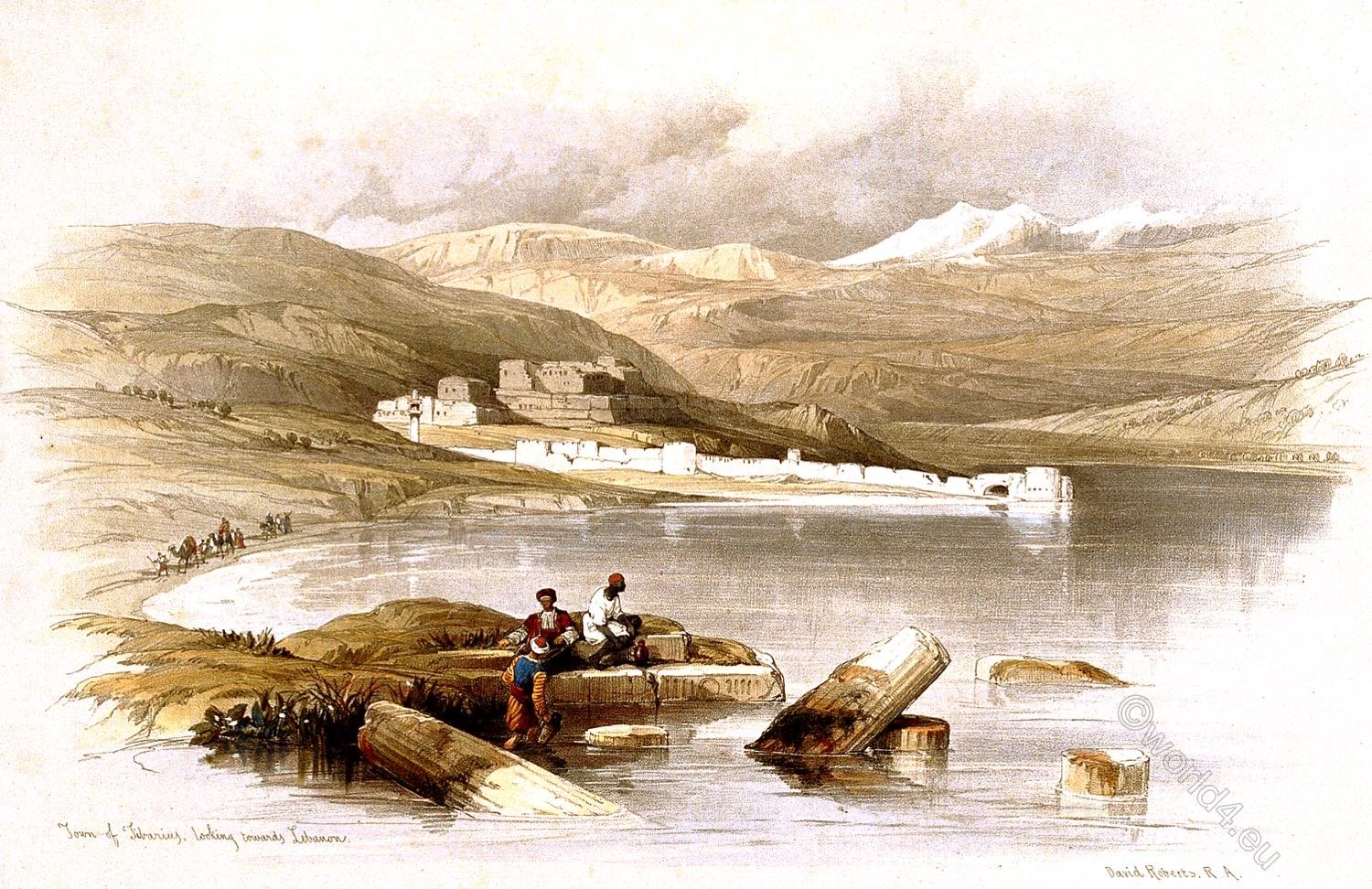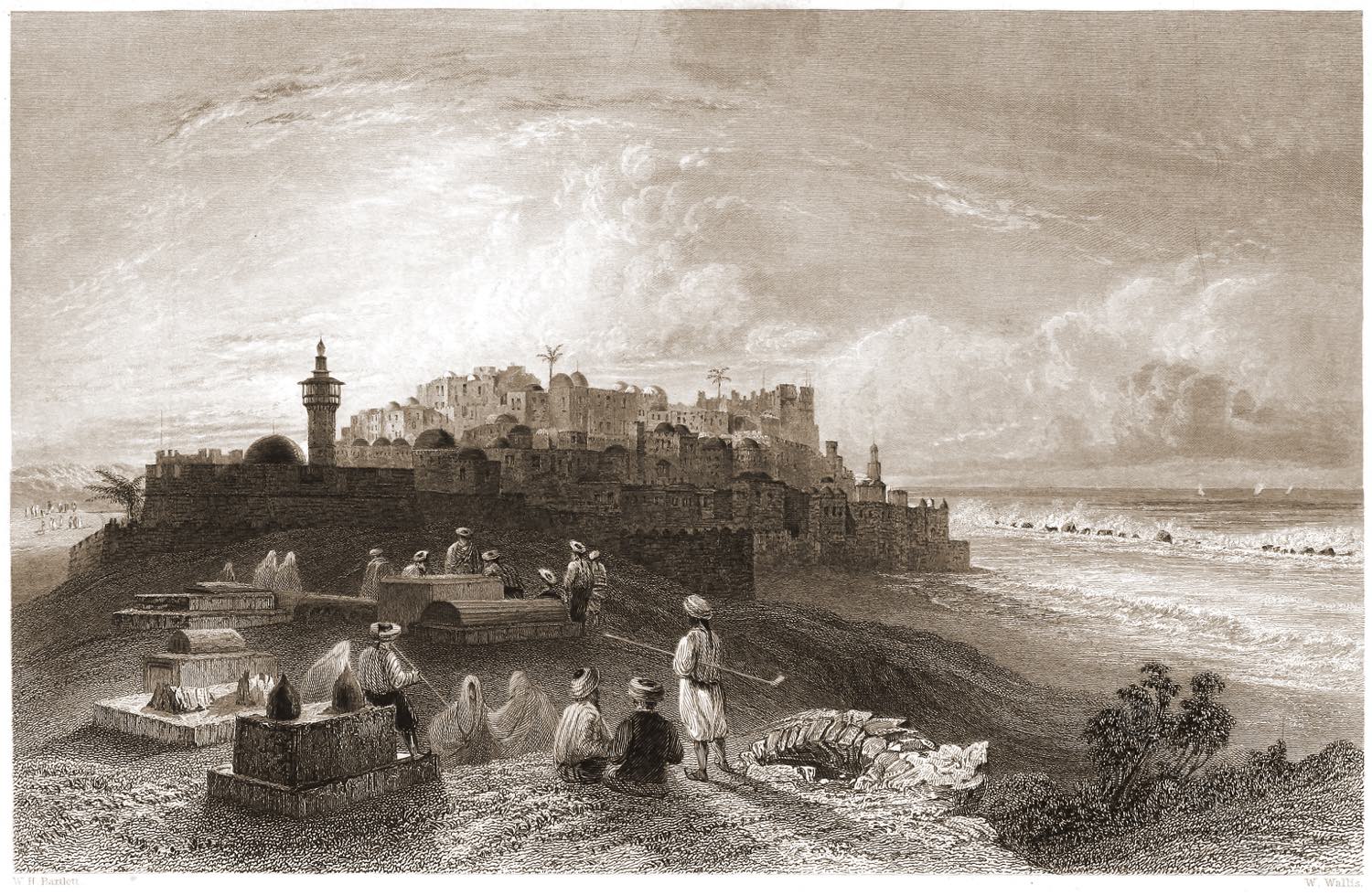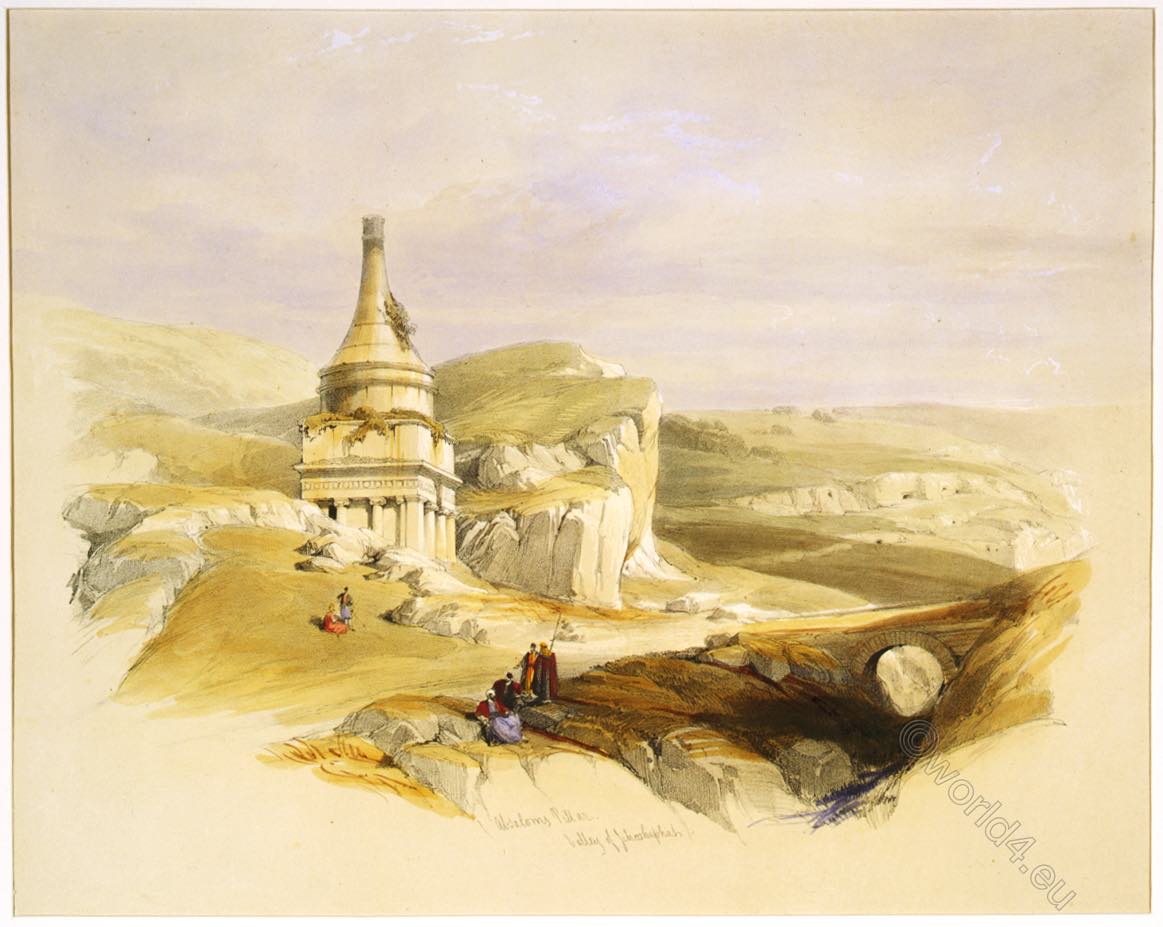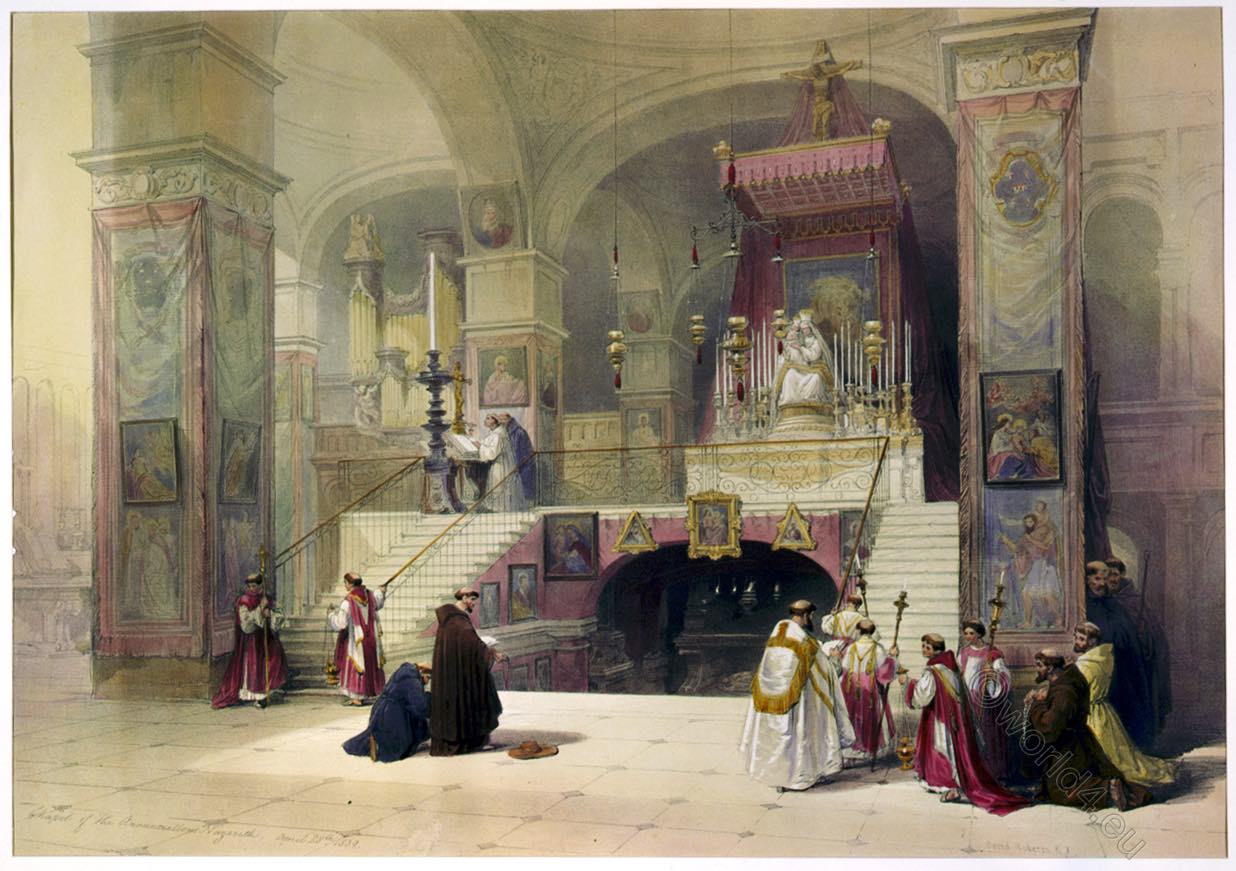The Tomb of Zechariah is one of the four known rock tombs in the Kidron Valley in Jerusalem. It dates from the time of the Herodian Temple. The Tomb of Zechariah is called a “tomb”, but it is a monolith carved out of the naturally grown rock and does not contain a burial chamber. The term “monument” is therefore more accurate.
THE TOMB OF ZECHARIAH, VALLEY OF JEHOSHAPHAT.
There are four monumental structures in the Valley of Jehoshaphat, on the east side of the Kidron, and opposite to the south-east corner of the Grand Mosque. Those have received from monks and travelers the names of the Tombs of Jehoshaphat, St. James, Absalom, and Zechariah. The two latter are real monuments of rock, the two former are only excavated tombs with ornamented portals.
The Tomb of Zechariah is so called in allusion to him who was “slain between the temple and the altar.” It is a square block, of about twenty feet on each side, the rock having been cut away round it, so as to form an area in which it stands isolated. The body of the tomb is about eighteen or twenty feet high, and apparently solid. The sides are decorated each with two columns, and two half columns, the latter adjacent to square pillars at the corners, and all having capitals of the Ionic order. Round the cornice is an ornament of acanthus leaves, about three feet high, and above this the top is formed by an obtuse pyramid ten or twelve feet in height.
The whole monument has thus an elevation of about thirty feet, and, with all its ornaments, is wholly cut out of the solid rock.1 It exhibits a singular mixture of the styles of Greece and Egypt; somewhat of the classic elegance of the former, with the massiveness of the latter.
1 Robinson, Biblical Researches, vol. i. p. 518.
Source: The Holy Land, Syria, Idumea, Arabia, Egypt, & Nubia, by David Roberts, George Croly, William Brockedon. London: Lithographed, printed and published by Day & Son, lithographers to the Queen. Cate Street, Lincoln’s Inn Fields, 1855.
Continuing

